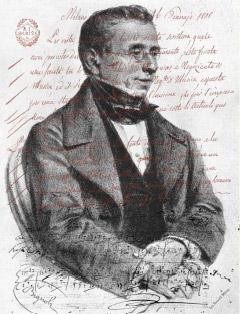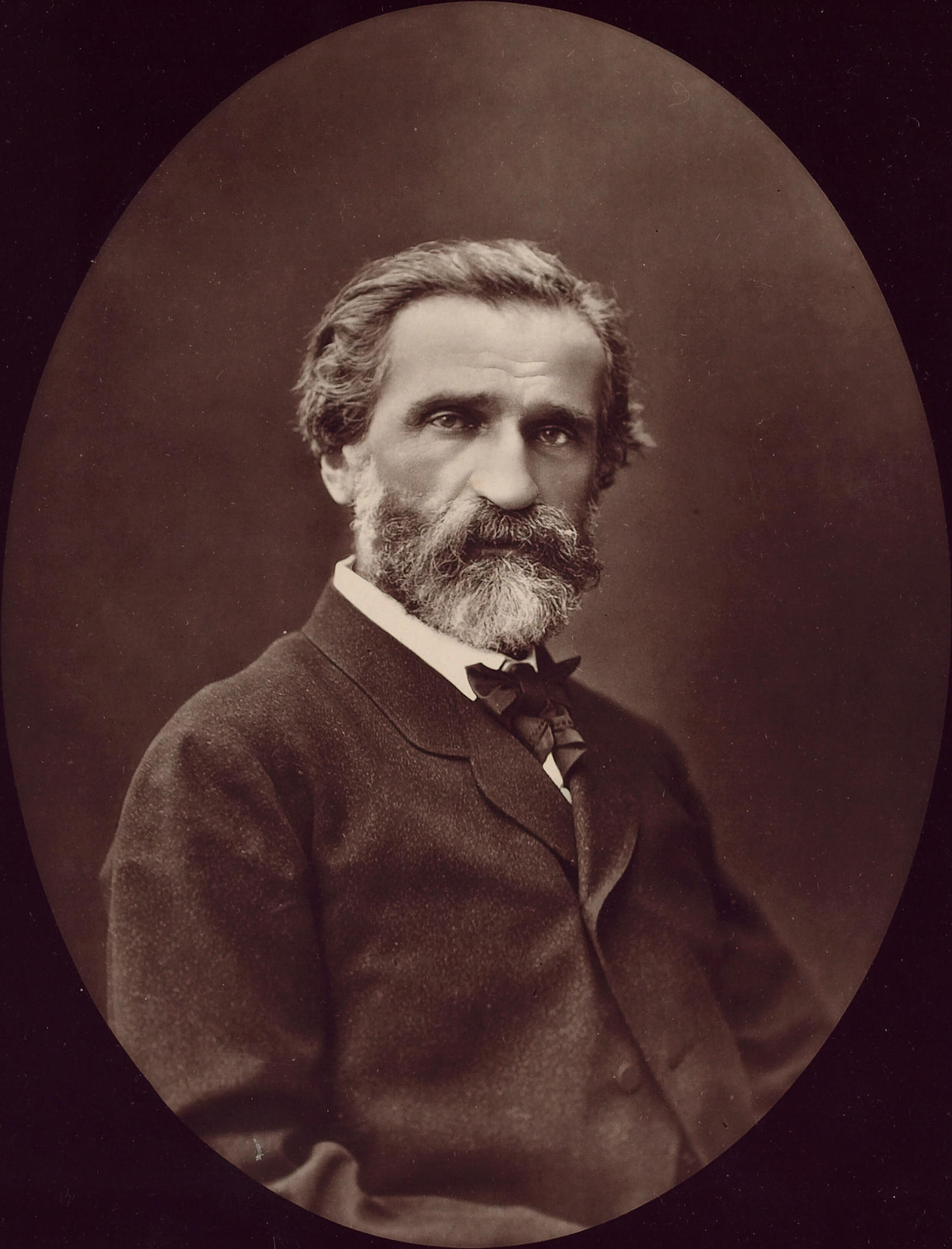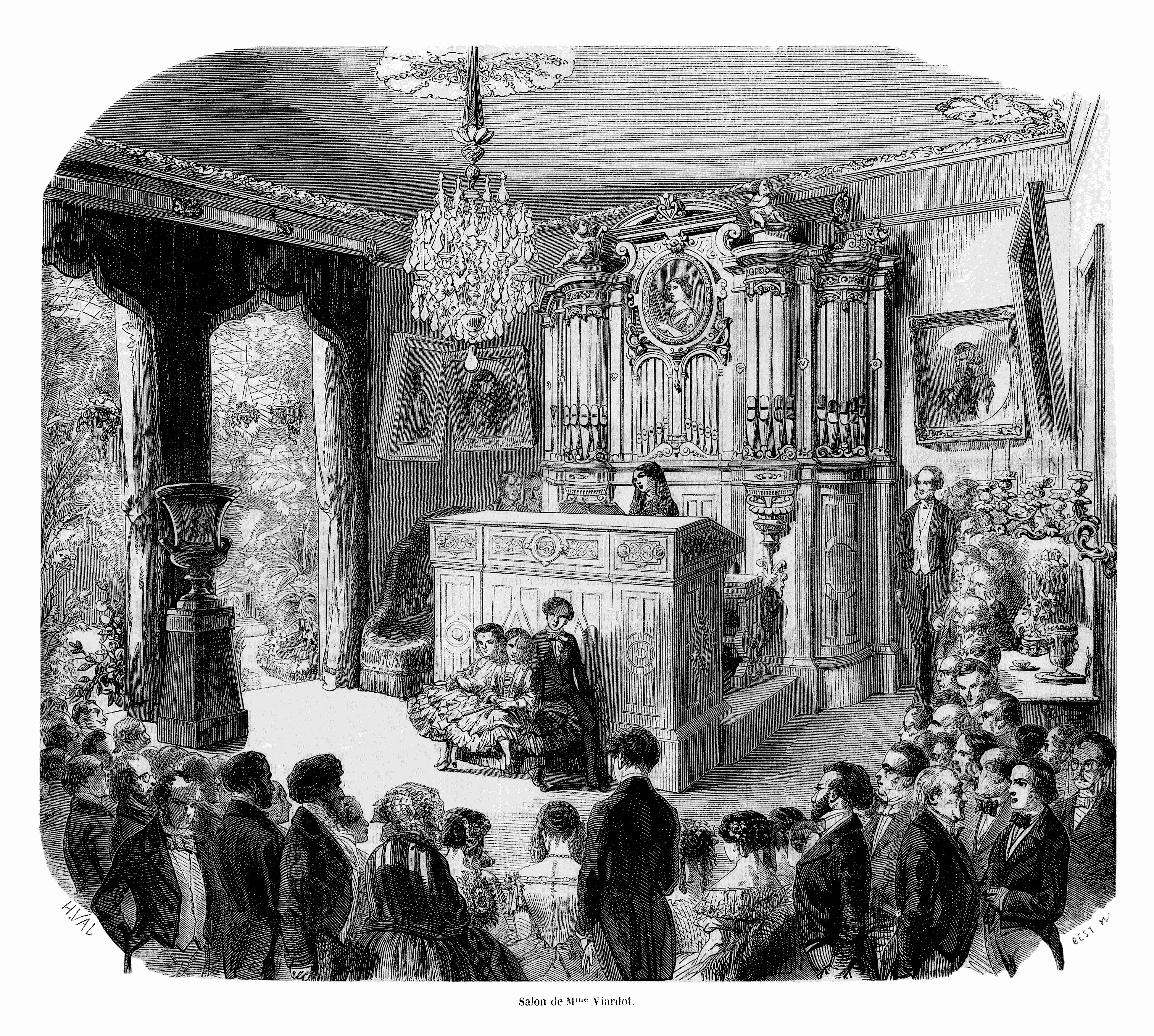|
Insertion Aria
An insertion aria (' in Italian, also known as suitcase aria, interpolated aria, or trunk aria) is an aria sung in an opera for which it was not composed. It was a practice that began in the seventeenth century and continued actively through the late 19th century and sporadically through the 20th century. The insertion aria could replace an existing aria, or might be added to an opera. All insertions were planned in advance. They might be composed by the same composer of the opera, or might have been written by a different composer, with or without the knowledge of the opera's composer. Most insertions were of arias; infrequently non-operatic songs were inserted. Insertions could consist of arias, duets, ensembles, even entire scenes. Although men and women singers used insertion, women are the ones most remembered for the practice. The years 1800–1840 represent the apex of influence that women singers exerted over the operatic stage, influencing most aspects of opera performan ... [...More Info...] [...Related Items...] OR: [Wikipedia] [Google] [Baidu] |
Prima Donna
In opera or ''commedia dell'arte'', a prima donna (; Italian for 'first lady'; : ''prime donne'') is the leading female singer in the company, the person to whom the ''prime'' roles would be given. ''Prime donne'' often had grand off-stage personalities and were seen as demanding of their colleagues. Because of this, the term has spread in contemporary usage, from its original usage in opera to referring to anyone behaving in a demanding or temperamental fashion or having an inflated view of oneself. The prima donna in opera was normally, but not necessarily, a soprano. The corresponding term for the male lead (usually a castrato in the 17th and 18th centuries, later a tenor) is ''primo uomo''.H. Rosenthal, H. and J. Warrack, ''The Concise Oxford Dictionary of Opera'', 2nd Edition, Oxford University Press, 1979. p. 398. Opera In 19th century Italy, the leading woman in an opera or ''commedia dell'arte'' company was known as the prima donna, literally the "first lady". This ... [...More Info...] [...Related Items...] OR: [Wikipedia] [Google] [Baidu] |
Urtext Edition
An urtext edition (from German prefix wikt:ur-, ur- ''original'') of a work of classical music is a printed version intended to reproduce the original intention of the composer as exactly as possible, without any added or changed material. Other kinds of editions distinct from urtext are ''facsimile'' and ''interpretive'' editions, discussed below. Preparing urtext editions Sources The sources for an urtext edition include the autograph (that is, the manuscript produced in the composer's hand), hand copies made by the composer's students and assistants, the first published edition, and other early editions. When the editor relies on a first edition, it is sometimes best to rely not on the earliest printed copies, but on later printings. This is because publishers sometimes kept the plates from the earliest printing, reusing them for later printings with corrections from the composer. A particularly valuable source for urtext editions is a copy of the first edition that was ha ... [...More Info...] [...Related Items...] OR: [Wikipedia] [Google] [Baidu] |
Casa Ricordi
Casa Ricordi is a publisher of primarily European classical music, classical music and opera. Its classical repertoire represents one of the important sources in the world through its publishing of the work of the major 19th-century Italian composers such as Gioachino Rossini, Gaetano Donizetti, Vincenzo Bellini, Giuseppe Verdi, and, later in the century, Giacomo Puccini, composers with whom one or another of the Ricordi family came into close contact.Gossett 2006, p. 97 Founded in Milan in 1808 as G. Ricordi & C. by violinist Giovanni Ricordi (1785–1853), the Ricordi company became a totally family-run organization until 1919, when outside management was appointed. Four generations of Ricordis were at the helm of the company, Giovanni being succeeded in 1853 by his son Tito (1811–1888) (who had worked for his father since 1825). Tito's son was Giulio Ricordi, Giulio (1840–1912). He had also worked for his father, beginning full-time in 1863, and then took over from 1888 ... [...More Info...] [...Related Items...] OR: [Wikipedia] [Google] [Baidu] |
Giuseppe Verdi
Giuseppe Fortunino Francesco Verdi ( ; ; 9 or 10 October 1813 – 27 January 1901) was an Italian composer best known for List of compositions by Giuseppe Verdi, his operas. He was born near Busseto, a small town in the province of Parma, to a family of moderate means, receiving a musical education with the help of a local patron, Antonio Barezzi. Verdi came to dominate the Italian opera scene after the era of Gioachino Rossini, Vincenzo Bellini, and Gaetano Donizetti, whose works significantly influenced him. In his early operas, Verdi demonstrated sympathy with the Risorgimento movement which sought the unification of Italy. He also served briefly as an elected politician. The chorus "Va, pensiero" from his early opera ''Nabucco'' (1842), and similar choruses in later operas, were much in the spirit of the unification movement, and the composer himself became esteemed as a representative of these ideals. An intensely private person, Verdi did not seek to ingratiate hims ... [...More Info...] [...Related Items...] OR: [Wikipedia] [Google] [Baidu] |
Bianca E Fernando
''Bianca e Fernando'' (''Bianca and Fernando'') is an opera in two acts by Vincenzo Bellini. The original version of this opera was presented as ''Bianca e Gernando'' and was set to a libretto by Domenico Gilardoni, based on ''Bianca e Fernando alla tomba di Carlo IV, duca di Agrigento'' (''Bianca and Ferdinand at the Tomb of Charles IV, Duke of Agrigento''), a play by Carlo Roti which is set in Sicily. In 1826, use of the name ''Fernando'' in the title was forbidden because Ferdinando was the name of the heir to the throne, and no form of it could be used on a royal stage. The 1826 work—Bellini's first professionally staged opera—had its first performance at the Teatro di San Carlo in Naples on 30 May 1826. Its success resulted in the offer to the young composer from Domenico Barbaia, the intendente at the San Carlo and also part of the management of La Scala opera house in Milan, of a commission to write a new opera for La Scala. The revival of ''Bianca e Gernando'', wi ... [...More Info...] [...Related Items...] OR: [Wikipedia] [Google] [Baidu] |
Adelaide Tosi
Adelaide Tosi ( – 27 March 1859) was an Italian operatic soprano. Early life Tosie was born in Milan in . Career She studied singing with Girolamo Crescentini. She made her professional debut in her native city on 26 December 1820, singing Ippolito in Simon Mayr's '' Fedra''.Ashbrook (1982), p. 612, note 149. On 12 March 1822 she portrayed Azema in the premiere of Giacomo Meyerbeer's '' L'esule di Granata'' at La Scala. Her debut in Naples was on 29 September 1824 at the Teatro di San Carlo in the premiere of Giovanni Pacini's '' Alessandro nelle Indie''. On 7 April 1828, she portrayed Bianca in Vincenzo Bellini's ''Bianca e Fernando'' for the grand opening of the Teatro Carlo Felice in Genoa. She returned to that house later that season to sing Pamira in Gioachino Rossini's '' Le siège de Corinthe''. She went on to portray roles in three world premieres of operas by Gaetano Donizetti in Naples: Argelia in '' L'esule di Roma'' (1828), Neala in '' Il paria'' (1829), and Elisa ... [...More Info...] [...Related Items...] OR: [Wikipedia] [Google] [Baidu] |
Vincenzo Bellini
Vincenzo Salvatore Carmelo Francesco Bellini (; ; 3 November 1801 – 23 September 1835) was an Italian opera composer famed for his long, graceful melodies and evocative musical settings. A central figure of the era, he was admired not only by the public, but also by many composers who were influenced by his work. His songs balanced florid Ornament (music), embellishment with a deceptively simple approach to lyric setting. Born to a musical family in Sicily, he distinguished himself early and earned a scholarship to study under several noted musicians at Music conservatories of Naples#Conservatorio di San Sebastiano, Naples' Real Collegio di Musica. There he absorbed elements of the Neapolitan School's style and was inspired by performances of Donizetti's and Rossini's operas, among others, in more modern idioms. He wrote his first opera, ''Adelson e Salvini'' (1825), for the conservatory, and his next, ''Bianca e Fernando'' (1826), on a Teatro di San Carlo-affiliated commiss ... [...More Info...] [...Related Items...] OR: [Wikipedia] [Google] [Baidu] |
Otello
''Otello'' () is an opera in four acts by Giuseppe Verdi to an Italian libretto by Arrigo Boito, based on William Shakespeare, Shakespeare's play ''Othello''. It was Verdi's penultimate opera, first performed at the La Scala, Teatro alla Scala, Milan, on 5 February 1887. The composer was reluctant to write anything new after the success of ''Aida'' in 1871, and he retreated into retirement. It took his Milan publisher Giulio Ricordi the next ten years, first to encourage the revision of Verdi's 1857 ''Simon Boccanegra'' by introducing Boito as librettist and then to begin the arduous process of persuading and cajoling Verdi to see Boito's completed libretto for ''Otello'' in July/August 1881. However, the process of writing the first drafts of the libretto and the years of their revision, with Verdi all along not promising anything, dragged on. It was not until 1884, five years after the first drafts of the libretto, that composition began, with most of the work finishing in late ... [...More Info...] [...Related Items...] OR: [Wikipedia] [Google] [Baidu] |
Lydia Goehr
Lydia Goehr (born January 10, 1960) is an American philosopher and musicologist. She is the Fred and Fannie Mack Professor of Humanities, Department of Philosophy, at Columbia University. Her research specialties include the philosophy of music, aesthetics, critical theory, the philosophy of history, and 19th- and 20th-century philosophy. Early life and education Goehr was born in London, on January 10, 1960. She is the daughter of the composer Alexander Goehr and granddaughter of Walter Goehr and the photographer Laelia Goehr. She received her Ph.D. from Cambridge University, where her dissertation on the ontology of music was supervised by Bernard Williams. Career In addition to her permanent appointment at Columbia, Goehr has accepted a number of visiting appointments, including a position as Visiting Ernest Bloch Professor at UC Berkeley's music department in 1997, as the visiting Aby Warburg Professor at the University of Hamburg in 2002–2003, as a visiting professor at t ... [...More Info...] [...Related Items...] OR: [Wikipedia] [Google] [Baidu] |
Cendrillon (Viardot)
''Cendrillon'' is a chamber operetta with dialogue in three acts by Pauline Viardot based on the story of Cinderella. The work, for a cast of seven with piano orchestration, premiered in Viardot's Paris salon on 23 April 1904, when she was 83, and was published later that year. Inspiration for this work was also found in the small play for children "The Snow Queen" by based on the tale. Historians are unsure of when the opera was composed, although it is thought to be after the death of Viardot's friend (and possibly her lover) Ivan Turgenev in 1883 as he did not write the libretto. It has been described as "a retelling of the Cinderella story with Gallic wit, Italianate bel canto, and a quirkiness all her iardot'sown". The plot remains relatively faithful to Perrault's original fairy tale, but takes a much more lighthearted approach than the other operatic adaptations by Massenet, Rossini and Isouard. The evil stepmother is replaced with a bumbling and clueless stepfather and ... [...More Info...] [...Related Items...] OR: [Wikipedia] [Google] [Baidu] |
Pauline Viardot
Pauline Viardot (; 18 July 1821 – 18 May 1910) was a French dramatic mezzo-soprano, composer and pedagogue of Spanish descent. Born Michelle Ferdinande Pauline García,FitzLyon, p. 15, referring to the baptismal name. Thbirth recorddigitized at Paris's ''État civil reconstitué (XVIe-1859)'' reads instead: "Michelle Pauline Ferdinande Laurence Garcia". she came from a musical family and took up music at a young age. She began performing as a teenager and had a long and illustrious career as a star performer. Name Her name appears in various forms. When it is not simply "Pauline Viardot", it most commonly appears in association with her maiden name García or the unaccented form, Garcia. This name sometimes precedes Viardot and sometimes follows it. Sometimes the words are hyphenated; sometimes they are not. She achieved initial fame as "Pauline García"; the accent was dropped at some point, but exactly when is not clear. After her marriage, she referred to herself simply as " ... [...More Info...] [...Related Items...] OR: [Wikipedia] [Google] [Baidu] |






